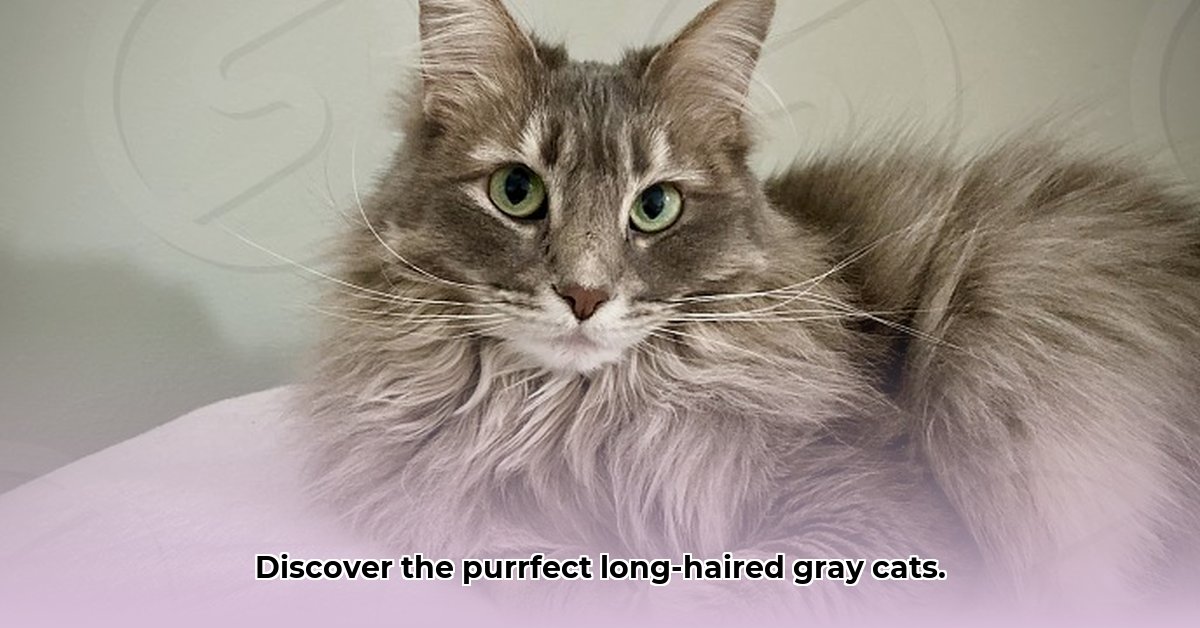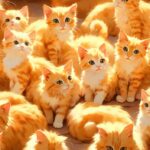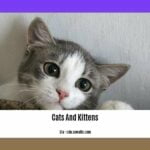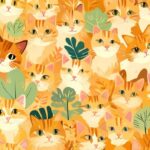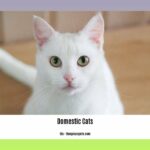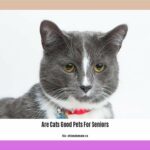Embracing the Elegance: Your Guide to Long-Haired Gray Cats
Long-haired gray cats, with their captivating beauty and unique personalities, hold a special allure for cat lovers. This comprehensive guide delves into the world of these majestic felines, exploring popular breeds, essential grooming practices, nutritional needs, breed-specific health considerations, and insights into their individual temperaments. Prepare to embark on a journey of discovery as we unveil the secrets to a fulfilling life with your long-haired gray companion.
Unveiling the Majesty: A Portrait of Gray Cat Breeds
The world of long-haired gray cats encompasses a diverse array of breeds, each with its own distinct characteristics, grooming requirements, and personality traits. From the regal Persian to the playful Turkish Angora, understanding these nuances is crucial in choosing the perfect feline companion to complement your lifestyle.
Persian: Revered for their luxurious, flowing coats and gentle dispositions, Persians demand dedicated grooming. Daily brushing is essential to prevent matting and maintain their opulent fur. While their grooming needs are significant, the affectionate cuddles and serene companionship they offer make it a worthwhile endeavor.
Maine Coon: These gentle giants, characterized by their substantial size and striking tufted ears and paws, also require consistent grooming. Their thick, magnificent coats necessitate regular attention to prevent tangles and ensure their comfort. Imagine the satisfaction of caring for a miniature lion—a truly rewarding experience.
Nebelung: Often described as the long-haired version of the Russian Blue, Nebelungs possess a distinctive silvery-gray coat that exudes elegance. While their grooming requirements are less demanding than Persians or Maine Coons, regular brushing remains crucial to maintain their sleek appearance. Their quiet and reserved nature adds to their mystique.
Norwegian Forest Cat: Hailing from the rugged landscapes of Norway, these cats boast a thick double coat designed to withstand harsh climates. Their robust fur is surprisingly low-maintenance, requiring less frequent grooming compared to other long-haired breeds. Their playful and adaptable nature makes them wonderful companions.
Turkish Angora: These elegant felines, known for their playful intelligence and striking appearance, sometimes showcase a stunning gray coat. Their grooming needs are moderate, and their affectionate and engaging personalities bring a touch of vibrancy to any home. They are known for their love of interaction and playful antics.
British Longhair: A close relative of the British Shorthair, this breed shares its calm and affectionate demeanor but with a luxurious, dense coat. Regular brushing is essential to keep their fur free of mats and looking its best. They are known for their adaptable nature and make excellent family pets.
Siberian: Hailing from the cold expanse of Siberia, these cats are equipped with a thick, triple-layered coat that requires regular grooming to prevent matting. They are known for their hypoallergenic qualities, making them a popular choice for allergy sufferers. Their playful and affectionate nature makes them delightful companions.
The Art of Grooming: Maintaining a Majestic Coat
Grooming is paramount for long-haired gray cats. Regular brushing, bathing, and other essential practices ensure their comfort, health, and radiant appearance. Mastering these techniques strengthens the bond with your feline friend and allows for early detection of potential health issues.
Brushing: The frequency of brushing varies depending on the breed. Persians require daily attention, while others may thrive with less frequent sessions. Brushing prevents mats, distributes natural oils for a healthy sheen, and provides a relaxing bonding experience for both cat and owner. Use the right tools: slicker brushes for removing loose hair, wide-toothed combs for tackling tangles, and de-shedding tools during shedding season.
Bathing: While not a daily requirement, occasional baths are necessary to maintain cleanliness. Use a pH-balanced cat shampoo specifically formulated for sensitive skin, and ensure thorough rinsing to prevent residue buildup. Introduce bathing gradually and make it a positive experience with treats and praise.
Mat Management: Despite regular brushing, mats can sometimes form, especially in areas prone to friction. Gentle removal with a mat splitter or de-matting comb is crucial. For stubborn or extensive matting, consult a professional groomer to avoid causing discomfort or injury.
Beyond Brushing: Nail trimming, ear cleaning, and dental care are integral aspects of grooming. Regularly check your cat’s ears for any signs of infection or mites. Dental hygiene is crucial for preventing periodontal disease. Incorporate these practices into your grooming routine for comprehensive care.
Nurturing Your Gray Companion: A Holistic Approach
Beyond grooming, providing a nurturing environment encompasses a holistic approach to your cat’s well-being. Nutritional wisdom, awareness of breed-specific health concerns, and understanding their unique temperament contribute to a long, healthy, and enriching life together.
Nutritional Wisdom: Fueling Vitality
A balanced diet tailored to your cat’s specific needs is essential for maintaining a healthy coat, supporting overall well-being, and preventing health issues. Consult your veterinarian for personalized dietary recommendations based on breed, age, activity level, and any existing health conditions. High-quality cat food, rich in animal protein and essential fatty acids, contributes to a vibrant coat, strong immune system, and optimal energy levels.
Breed-Specific Health Insights: Proactive Care
Each breed carries a unique predisposition to certain health issues. For instance, Persians are prone to polycystic kidney disease (PKD), while Maine Coons may be susceptible to hypertrophic cardiomyopathy (HCM). Regular veterinary checkups, breed-specific screening tests, and proactive care are essential for early diagnosis, prompt intervention, and improved quality of life.
Embracing Individuality: Understanding Temperament
Beyond breed characteristics, each cat possesses a unique personality. Some are affectionate lap cats, while others are independent explorers. Observing their behavior, providing environmental enrichment, and engaging in interactive play helps you understand their individual preferences and fosters a strong, fulfilling bond. Respect their boundaries, provide opportunities for mental and physical stimulation, and create a safe and secure environment where they can thrive.
By understanding the specific needs of long-haired gray cats – from grooming and nutrition to breed-specific health and individual temperament – you are empowered to create a harmonious and enriching life together. Welcoming a long-haired gray cat into your home is not just about admiring their beauty; it’s about embarking on a rewarding journey of companionship, understanding, and unconditional love.
- Discover Medieval Castle Designs: A Complete History - April 30, 2025
- Medieval Houses: A Social History Through Architecture - April 29, 2025
- Unlock Senior Perks: How Old is a Senior Citizen?Complete Guide - April 29, 2025
